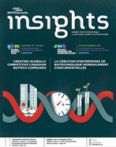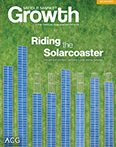Applying the Supreme Court’s New Standard of Definiteness
Dow Chemical Co. v. Nova Chemicals Corp.1
Applying the Supreme Court’s New Standard of Definiteness
In general terms, the definiteness requirement of 35 U.S.C. §112, ¶2 is satisfied if one of ordinary skill in the art would understand the scope of the claims when read in view of the specification and prosecution history. Before June 2014, challenging a claim as invalid for indefiniteness was generally considered a difficult argument to win except in extreme cases. This is largely because for over 10 years, the U.S. Court of Appeals for the Federal Circuit applied a strict standard, often requiring challengers to show that a claim was so unclear as to be “insolubly ambiguous” and not “amenable to construction.”2 But this standard was revisited last summer when the U.S. Supreme Court decided Nautilus, Inc. v. Biosig Instruments, Inc.3 And in a recent decision, the Federal Circuit unequivocally confirmed that “Nautilus changed the law of indefiniteness.”
Section 112, paragraph 2 sets forth the definiteness requirement as follows:
The specification shall conclude with one or more claims particularly pointing out and distinctly claiming the subject matter which the applicant regards as his invention.4
In Nautilus, the U.S. Supreme Court addressed the degree of imprecision tolerated by this statute, balanced against a patentee’s obligation to apprise the public of the scope of the claimed invention. The challenged claims in Nautilus were directed to a heart rate monitor with electrodes mounted “in spaced relationship with each other.” The Supreme Court noted that various arguments and even disagreement among the members of the Federal Circuit panel revealed that this language allows for multiple interpretations reflecting markedly different understandings of the scope of the patent. The Supreme Court also found that the Federal Circuit’s “insolubly ambiguous” and “amenable to construction” analyses did not adequately correspond to the statutory requirement for precision. More specifically, the Court stated that it is not enough to be able to ascribe some meaning to a claim; rather, the claim must describe the invention with reasonable clarity. Thus, the Nautilus case was remanded to the Federal Circuit for further consideration of the claims in view of the Supreme Court’s newly articulated standard – i.e., whether the claims, read in light of the specification and prosecution history, fail to inform with reasonable clarity those skilled in the art about the scope of the invention. On remand, the Federal Circuit reached the same conclusion as before – the claims were not indefinite.
While the consistency of the Nautilus results may have initially suggested that the Supreme Court’s decision had little impact on the law of indefiniteness, the Federal Circuit’s recent decision in Dow Chemical Co. v. Nova Chemicals Corp. states otherwise, confirming that a significant shift has indeed occurred.
In Dow Chemical, the challenged claims were directed to a polymer composition having specific physical properties, including “a slope of strain hardening coefficient greater than or equal to 1.3.” A primary issue in dispute was whether the patent made it clear how the “slope of strain hardening” should be measured. Three methods were known in the art, and an expert for the patentee, Dow Chemical, testified of a fourth method he had independently developed for measuring this value. The expert admitted that each of the four methods could produce a different result. Also, neither the specification nor prosecution history provided any guidance as to the method that should be used. Thus, the question before the Federal Circuit was whether the existence of multiple methods leading to different results renders the disputed claims indefinite. In addressing this question, the Federal Circuit noted that the pre-Nautilus answer is different from the post-Nautilus answer. Before Nautilus, the Federal Circuit had ruled that Dow’s claim language was not indefinite because it was possible for a skilled artisan to interpret and practice a method covered by the claims. But after Nautilus, the Federal Circuit reached the opposite conclusion, ruling that the claim language did not convey the scope of the invention with reasonable clarity because the intended method of measuring the “slope of strain hardening” was not clearly identified, thereby rendering the scope of the claimed polymer compositions likewise unclear. According to the Federal Circuit, the claims were indefinite because they would leave a skilled artisan to look to “unpredictable vagaries of any one person’s opinion” in determining the scope of the claim.
In reaching its decision, the Dow Court referred to another post-Nautilus case, Teva Pharms. USA Inc. v. Sandoz, Inc.5, in which the Federal Circuit applied the Nautilus standard to conclude that claims reciting “molecular weight” were indefinite because this property could refer to different measurements (i.e., average molecular weight, number average molecular weight, and weight average molecular weight), and the patent record failed to explicitly define the intended meaning of this term.
Conclusion: Going forward, those seeking to challenge a patent should give close consideration to indefiniteness and whether the claim language truly satisfies the new Nautilus standard. In particular, patents with claims that recite values for physical or chemical properties could be vulnerable to attack if those properties can be measured in multiple ways with varying results and the patent or prosecution history does not provide guidance as to the intended means for measurement. For instance, claims directed to oral pharmaceutical compositions having a particular dissolution profile must typically identify several conditions of dissolution, and could thus be at risk if the conditions are not fully delineated. On the other hand, patent applicants and patent practitioners should carefully consider claim language in pending applications regarding measureable properties and whether different results could be obtained if different measurement techniques/conditions are used, or whether the use of any properly calibrated instrument would be expected to give the same result. Additionally, prior to asserting a claim that recites a measurable chemical or physical property, patent owners might consider initiating an ex parte reexamination of the patent if the definiteness of the claims is in doubt, assuming there is some disclosure in the specification of the intended method for determining the property of concern.
References:
1 Dow Chemical Co. v. Nova Chemicals Corp., Nos. 2014-1431, 2014-1462, slip op. (Fed. Cir. Aug. 28, 2015).
2 See Exxon Research & Eng’g Co. v. United States, 265 F.3d 1371, 1375 (Fed. Cir. 2001).
3 134 S. Ct. 2120 (2014).
4 This statutory language is nearly identical to that of 35 U.S.C. §112(a), which was codified after enactment of the America Invents Act.
5 789 F.3d 1335 (Fed. Cir 2015).



